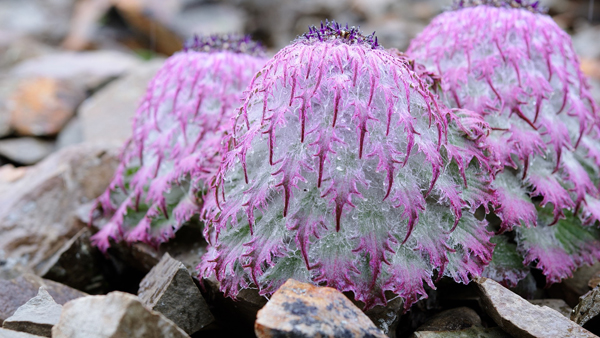 |
|
Still image in The Journey of Chinese Plants features Saussurea medusa on Baima Snow Mountain in Yunnan province. [Photo provided to China Daily] |
Employing a variety of techniques including underwater and microscope photography, as well as using large drones, the crew shot some 1,200 hours of footage, with the support of more than 100 botanists from China and abroad.
Scheduled to run on China Central Television and streaming platform iQiyi in the near future, the production is the longest botany documentary shot in the ultra-high definition 4k format to be made in China. But filming plants can also be unexpectedly dangerous, even if the lens is never trained on carnivorous animals.
When the crew trekked to a village in the island nation of Madagascar to shoot a segment about artemisinin in October 2018, they were shocked to find the area was on the verge of an outbreak of plague carried by mice. Careful to wear protective gear, the crew walked into a local hospital-which by then had six patients suffering from the plagueto shoot footage over the space of a week.
Artemisinin, isolated from sweet wormwood, is one of the world's most effective anti-malaria drugs. The discovery won Chinese expert Tu Youyou a Nobel Prize in medicine in 2015.